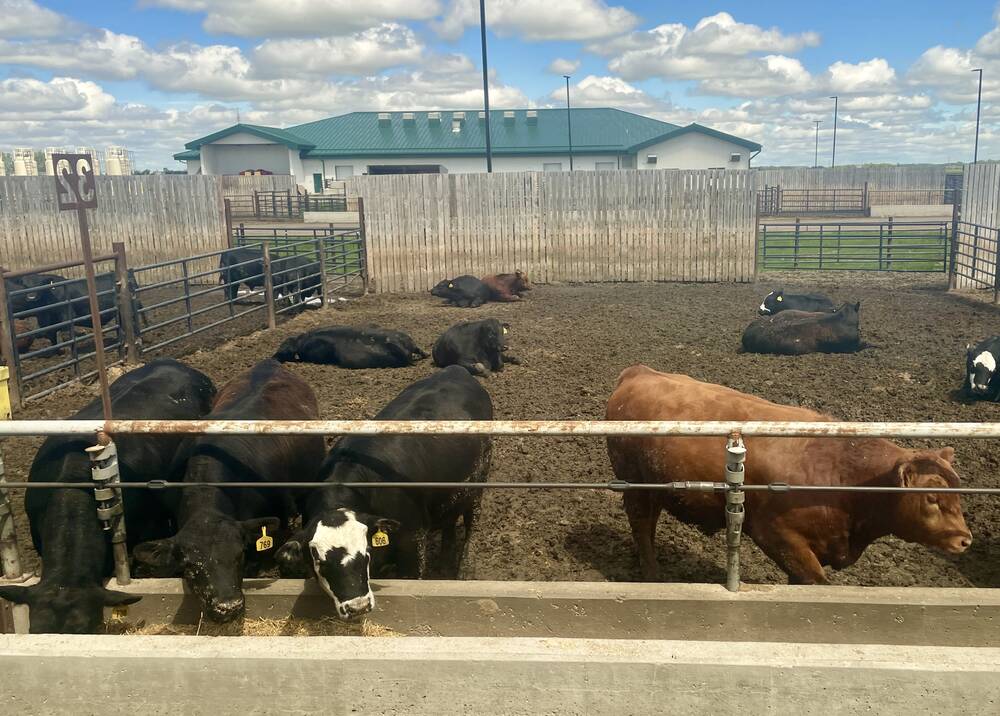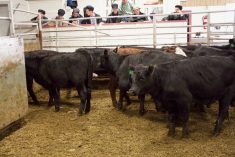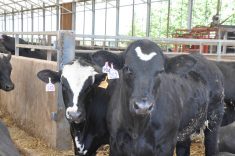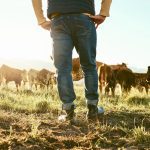Any supplier should know their product inside and out. That includes cattle producers, says Brian Perillat, agribusiness specialist with More Than Just Feed, a group of feed and nutrition companies geared for the beef and dairy sector.
Beef prices are still enjoying highs mid-way through 2024.
“It’s good dollars in our pockets,” said Perillat, who is also a cattle producer. “But you always want to have more, or you want to keep more of it.”
Read Also

Linebreeding horses drives genetic bottlenecks
Too much linebreeding and prioritizing pedigree can narrow genetic diversity and lead to horse health problems in future generations.
More deliberate cattle marketing can help pad the producer’s bottom line, he said.
Why it matters: Beef producers have been enjoying top prices, but experts say the benefit could be magnified with a more robust marketing plan.
Perillat was speaking at a June field day at the University of Saskatchewan’s Livestock and Forage Centre of Excellence.
“When you’re marketing calves, do you know how your calves performed?” he asked. “Do you know how they perform down the supply chain?
“Because if you don’t know any of that, all you’re doing is selling your calves, you’re just giving them to the highest bidder. That’s not marketing your cattle or actually trying to extract the value that they bring to the next buyer.”
A producer can get a leg up as a seller by knowing their feed conversion rate, dressing percentage and the overall health of their cattle. At the same time, they don’t have to drown themselves in data. Each aspect is an independent variable, Perillat said, and getting a better handle on even one of those aspects can improve cost-to-profit ratios.
Selling for feed efficiency
Good feed conversion can also be a selling point. If a farm produces cattle that are more efficient at turning feed to gain, those animals should be more attractive to anyone looking to finish that animal, he said.
Producers can often get that information from buyers or feedlots where they have taken their cattle in the past. Perillat said those buyers are often willing to share data because it’s in their interests to have producers optimize livestock.
Buyers typically assume an average feed efficiency of 6.5 or seven pounds of dry matter to one pound of gain. But if the producer knows a specific animal converts feed better, there’s a better chance that animal will make money for the buyer.
“You should be getting paid more for those good calves,” Perillat said. “Often that doesn’t happen in the supply chain, but you’re never going to get there if you don’t know how your calves do and if you don’t set them up properly.”
The digital age
More information also helps when selling via electronic means.
“There are brokers, and those who are selling electronically and following those cattle through, who can give a lot of insight into these kinds of deals,” Perillat said.
“We’ve seen guys who did this and follow through, or (who) went and did ranch groups. Then the next year they were getting bids 10, 12 cents higher from the guy who bought their cattle last year, whereas everybody else is bidding average, because the buyer knew (the cattle) performed well.”
Electronic markets can also help producers take advantage of current market values, he noted. They can negotiate for fall delivery at current prices. Robust marketing and having key information available can grease the wheels of those deals.
Other things to consider
Producers should also know the market. Perillat urged them to keep abreast of the current cattle market and what drives it. Feed conversion rate, dressing percentage and overall health are important statistics, but the agribusiness specialist also suggested farmers consider the following:
Canadian dollar and U.S. market: Canadian producers can partially thank the U.S. market for good calf prices. The exchange rate currently makes Canadian cattle attractive. That said, the industry should watch for swings in the currency exchange, which will affect prices and the futures market.
“If the packing plant offered the feedlot a zero basis … and (if) the dollar drops — everything else stays the same — they can pay you eight cents more and still have the same amount of profit in that calf,” Perillat said.
If the Canadian dollar rises, that same buyer has to pay the farmer less to get the same margin.
Elections are also coming in the U.S., he noted, bringing political uncertainties.
Feed prices: When the feed market fluctuates, so does the cattle market. Perillat pointed to barley price increases during the COVID-19 pandemic and the ensuing havoc on calf prices. In Lethbridge, where he farms, barley prices reached $9.50 a bushel at their peak.
“If barley prices go up a buck a bushel, the price of your calves go down 20 cents a pound,” he said. “We’re down to $6.50 (a bushel) now. There’s close to 60 cents of this calf market (that) is feed cost.”
Interest rates: High interest rates should be factored into bottom line calculations. They are rarely thought of, Perillat said, but they do weigh into the cost of production.
“On some of these calves, with our yearlings especially, it’s over 60 cents per head per day to finance your calves,” he said.
When interest is figured in the cost-to-gain calculation for backgrounding calves, he suggests it costs the producer around $1.80 per head per day.
















